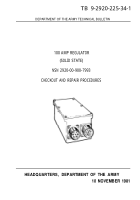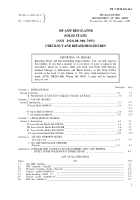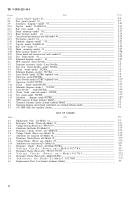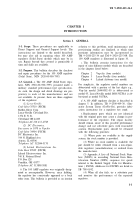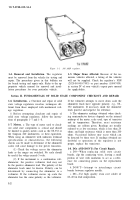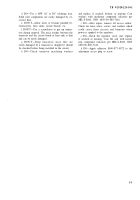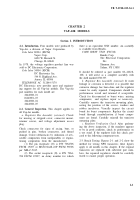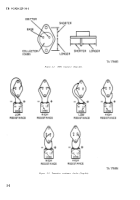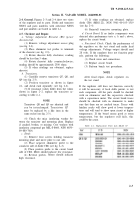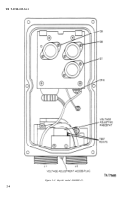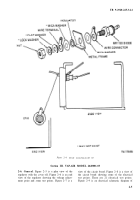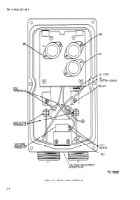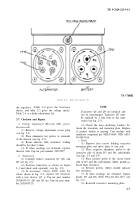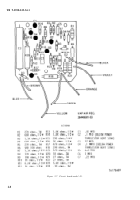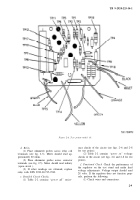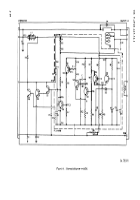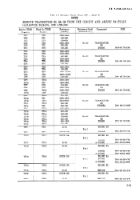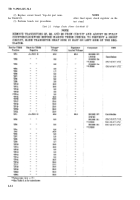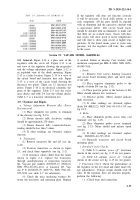TB-9-2920-225-34-1 - Page 9 of 70
TB 9-2920-225-34-1
Section II. VAP-AIR MODEL 26440001-01
2-4. General.
Figures 2–3 and 2–4 show two views
of the regulator and its parts. Diode and transistor
NSNS and parts numbers with substitute NSNS
and part numbers are listed in table 2–1.
2-5. Checkout and Repair.
a. Voltage Adjustment Rheostat (R6) (power
disconnected).
(1) Remove voltage adjustment access plug
(see fig. 2-3).
(2) Place ohmmeter test probes to terminals
of the rheostat (see fig. 2-3).
(3) Rotate rheostat fully clockwise; reading
should be less than 5 ohms.
(4) Rotate rheostat fully counterclockwise;
reading should be approximately 2500 ohms.
(5) If other readings are obtained, replace
rheostat.
b. Transistors.
(1) Carefully remove transistors Q7, Q8, and
Q9 (see fig. 2-3).
(2) Position transistor as shown in figure
2-1, and check each separately (see fig. 2-2).
(3) If resistance values differ from the values
shown in figure 2–2, replace the transistor ac-
cording to table 2–1.
NOTE
Transistors Q8 and Q9 are identical and
can be interchanged. Transistors Q7
must be replaced by a like item in the
same socket (see fig. 2-3 ).
(4) Check the mica insulating washer be-
tween the transistor and mounting plate. Replace
if cracked, broken, or missing. Coat washers with
insulation compound per MIL-S-8660, NSN 6850–
00–880-7616.
c. Diode.
(1) Remove four screws holding transistor
mounting plate and move plate to one side.
(2) Place negative ohmmeter probe to the
connector side of diode CR6 (see fig. 2–3).
(3) Place positive probe to the circiut board
side of CR6. Meter should indicate low resistance.
(4) Reverse probes.
Meter should indicate
high resistance.
(5) If other readings are obtained, replace
diode CR6 (MR1122), NSN 5961–00-103–1519
(see fig. 2-4).
(6) Reinstall transistor mounting plate.
d. Circuit Board.
If no faulty components were
detected after performance tests a,
b,
and c above,
replace the circuit board.
e. Functional Check.
Check the performance of
the regulator on the test stand and make final
voltage adjustments. Voltage output should read
28 volts. If the regulator does not function prop-
erly, perform the following:
(1) Check wires and connections.
(2) Replace circuit board.
(3) Perform bench test procedures.
NOTE
After final repair, check
the test stand.
If the regulator still does not
regulator on
function correctly
it will be necessary, if local skills permit, to test
each component. All the parts should be checked
with an ohmmeter and the capacitors checked
with a capacitance meter. The circuit board traces
should be checked with an ohmmeter to make
sure that there are no cracked traces. Traces with
hairline cracks will show good at lower tempera-
tures and will tend to show open circuit at higher
temperatures. If the board seems good at room
temperature, but the regulator still fails, this
could be the cause.
Table 2–1. Replacement Parts List—Model 01
2-3
Back to Top

